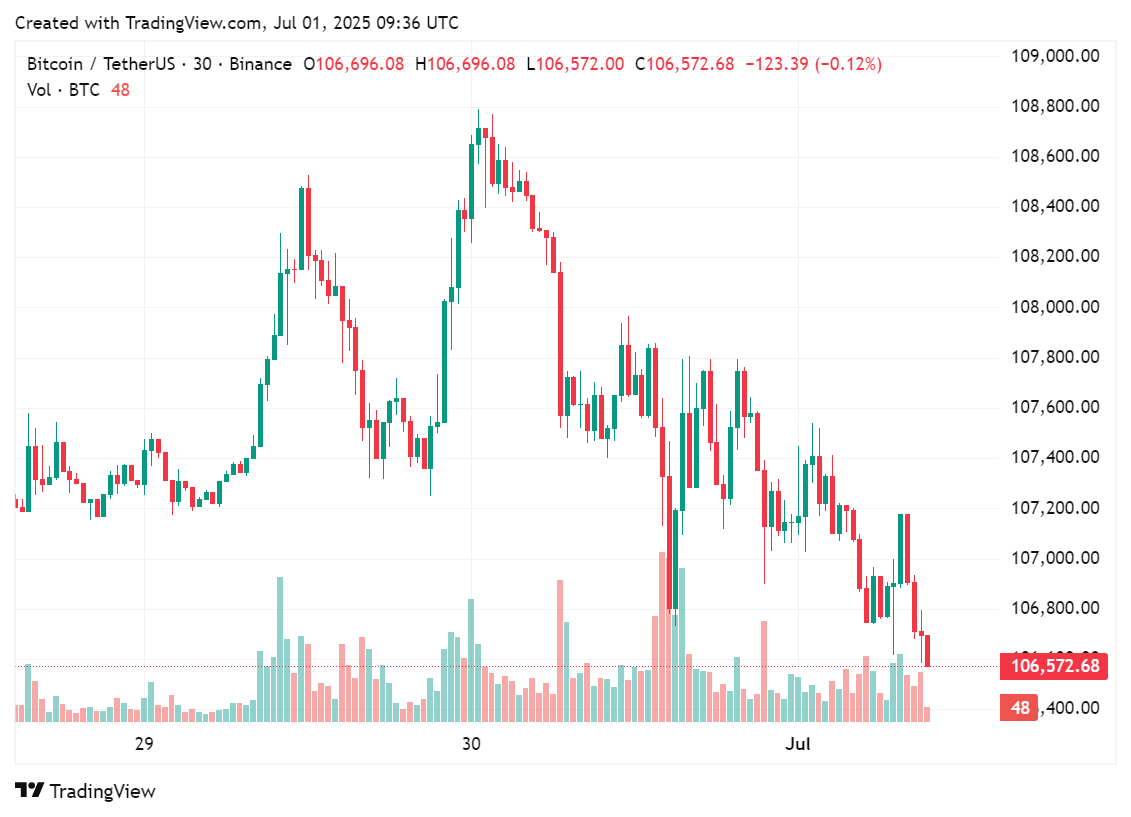After analyzing BTC’s historical pattern, Matrixport analysts predict that the largest cryptocurrency by market cap could reach as high as $116,000 in the next few weeks.
In a recent report, Matrixport analysts state that the month of July has always “historically favored Bitcoin,” as patterns of strong gains for BTC (BTC) have been consistently shown every year during the same period. Due to this strong pattern, analysts predict that it may be able to reach a new all-time high at $116,000.
“If historical seasonality holds, Bitcoin could be poised for another move higher — potentially reaching $116,000 in the coming weeks,” wrote the on-chain analysis firm.
If BTC does manage to reach the $116k mark in July, it would give way for a new all-time high, beating out the previous $111,814 from May 22 this year.
According to the shared chart showcasing Bitcoin performance in July, BTC once hit its highest July peak in 2020, rising by as much as 23.9%. The next two years that followed also held up strong gains. Analysts have concluded that the month of July has shown consistent gains, with an average return of more than 9.1%.

Although the past three years have only provided modest gains, with a 4.1% dip evident in 2023, analysts calculated that during the five-year time period BTC has managed to deliver double-digit gains.
“This creates a clear risk or reward skew to the upside as we head into July,” said Matrixport analysts.
As of late, BTC has been on a slow descend after geopolitical tensions between Iran and Israel heat up as well as the cautious stance on interest rates taken by the Fed. At press time, BTC has gone down by 0.9% in the past 24 hours. The largest cryptocurrency by market cap is currently trading hands at $106,678.
Most recently, Matrixport highlighted a key difference between the recent BTC rally and previous ones. The analytics firm believes that this cycle is fueled by institutional investor demand, proven by the flurry of companies switching to adopt BTC as corporate reserve assets. This is largely in contrast with past rallies, which relied on retail investor moves to predict the market.









